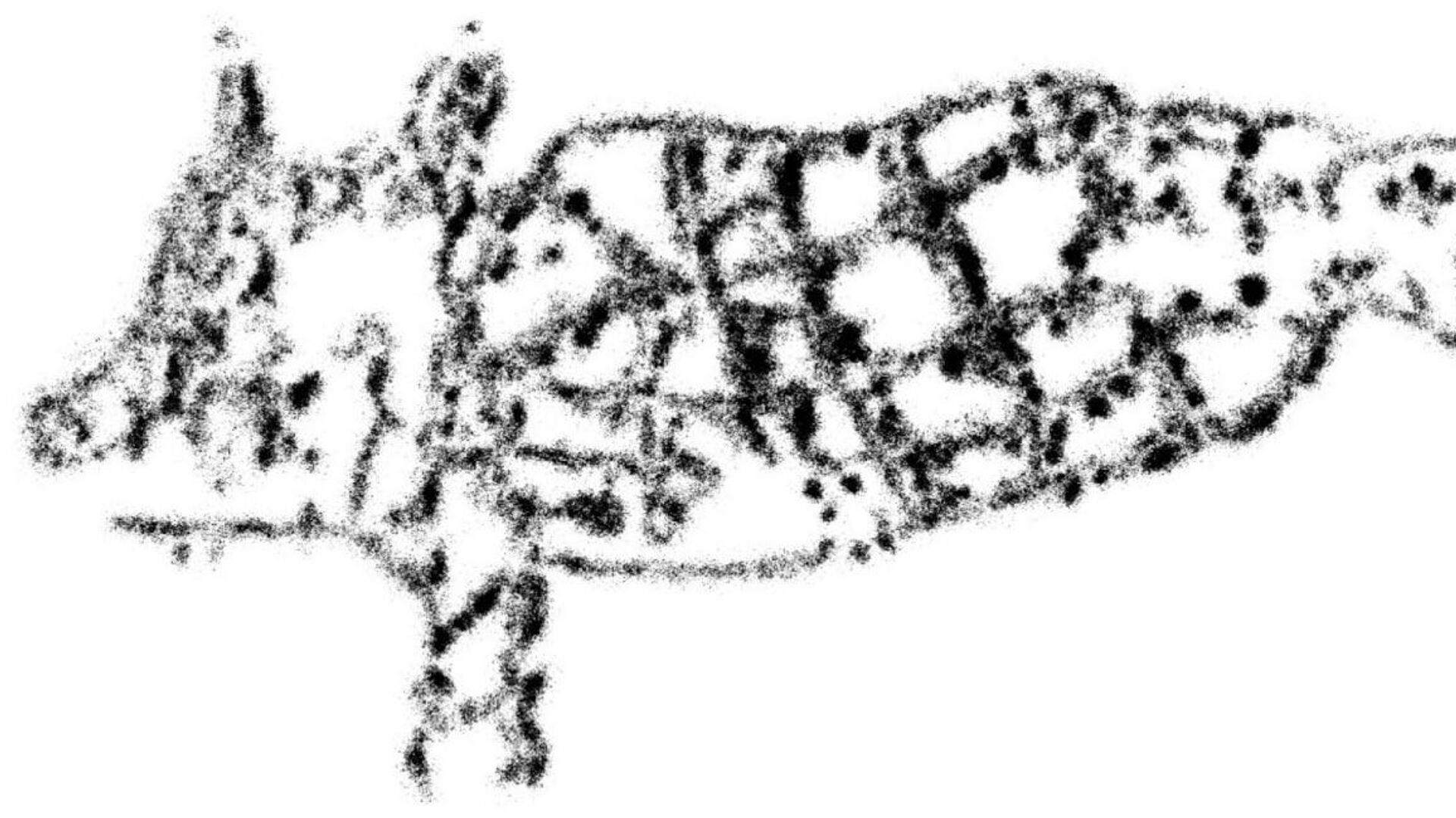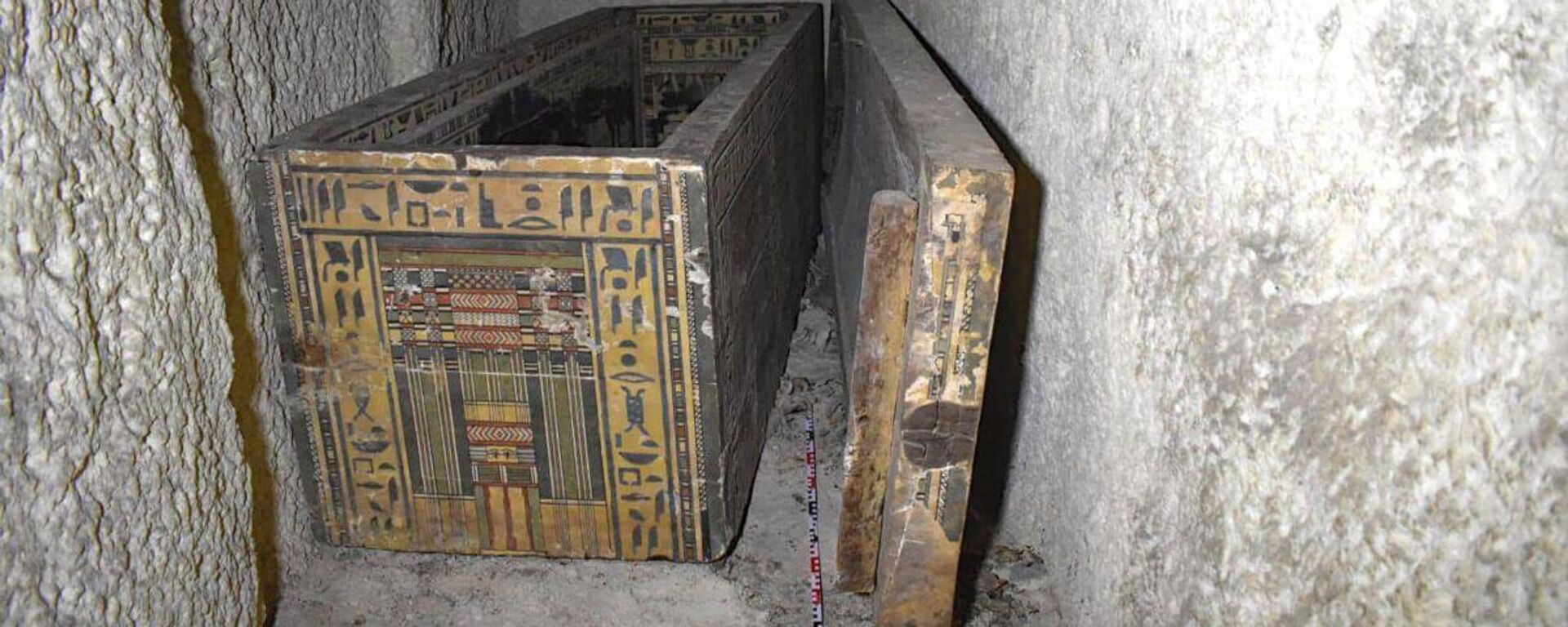https://en.sputniknews.africa/20241015/goatfish-in-stone-petroglyph-in-form-of-capricorn-discovered-in-egypt-1068697239.html
Goatfish in Stone: Petroglyph in Form of Capricorn Discovered in Egypt
Goatfish in Stone: Petroglyph in Form of Capricorn Discovered in Egypt
Sputnik Africa
Capricorn is a mythical aquatic creature, traditionally depicted as a hybrid of a goat and a fish. This image likely traces back to Enki (Ea), a key god in... 15.10.2024, Sputnik Africa
2024-10-15T19:05+0200
2024-10-15T19:05+0200
2024-10-15T19:05+0200
egypt
north africa
archeology
science
discovery
ancient egypt
history
research
https://cdn1.img.sputniknews.africa/img/07e8/0a/0f/1068698430_0:0:1156:650_1920x0_80_0_0_d816fd3ced6819f4e52356a2d01f9347.jpg
Egyptologists have detailed a petroglyph found at the el-Hosh site. Researchers reported that the carving shows a Capricorn—a mythical creature with a goat's head and forelegs and a fish's body. In recent research, Linda Evans from Macquarie University and her colleagues from Australia and Belgium have described a newly discovered petroglyph on a rock in Upper Egypt. Next to the previously discovered image of a chameleon, the researchers found a petroglyph about 40 centimeters long, which apparently represents the mythological creature. This creature has a mammalian head with two horns or ears, a small beard, two legs, and a fish-scaled body ending in a tail. Scientists believe it likely showcases an ancient depiction of Capricorn.The authors suggested this unique petroglyph most likely dates back to the Greco-Roman period, possibly created between the late 1st century BCE and the early 1st century CE. The earliest known use of the 12 zodiac signs in Egypt dates to about 300 BCE, shown in a Greek astronomical text. Over time, Egyptians included these symbols in temple art, burial chambers, and sarcophagi. For instance, a Capricorn depiction can be found in the Temple of Hathor in Dendera, dating from 14 to 37 CE.The first images of Capricorn appeared on cylinder seals from the era of the Third Dynasty of Ur (Mesopotamia) in the late 3rd millennium BCE. In Mesopotamia, Capricorn eventually became one of the constellations noted in the night sky, referenced on the cuneiform tablets known as MUL.APIN—compilations of astronomical and astrological knowledge from Ancient Babylon. This sign seems to have traveled from the Middle East to Greece and then to Rome.
https://en.sputniknews.africa/20241006/archaeologists-uncover-ancient-egyptian-tomb-with-intricately-painted-coffins-1068565460.html
egypt
north africa
ancient egypt
Sputnik Africa
feedback@sputniknews.com
+74956456601
MIA „Rossiya Segodnya“
2024
Christina Glazkova
https://cdn1.img.sputniknews.africa/img/07e7/0b/07/1063380906_0:0:673:674_100x100_80_0_0_79628b4d0cd9f29291a57aa13bbf9e7a.jpg
Christina Glazkova
https://cdn1.img.sputniknews.africa/img/07e7/0b/07/1063380906_0:0:673:674_100x100_80_0_0_79628b4d0cd9f29291a57aa13bbf9e7a.jpg
News
en_EN
Sputnik Africa
feedback@sputniknews.com
+74956456601
MIA „Rossiya Segodnya“
Sputnik Africa
feedback@sputniknews.com
+74956456601
MIA „Rossiya Segodnya“
Christina Glazkova
https://cdn1.img.sputniknews.africa/img/07e7/0b/07/1063380906_0:0:673:674_100x100_80_0_0_79628b4d0cd9f29291a57aa13bbf9e7a.jpg
egypt, north africa, archeology, science, discovery, ancient egypt, history, research
egypt, north africa, archeology, science, discovery, ancient egypt, history, research
Goatfish in Stone: Petroglyph in Form of Capricorn Discovered in Egypt
Christina Glazkova
Writer / Editor
Capricorn is a mythical aquatic creature, traditionally depicted as a hybrid of a goat and a fish. This image likely traces back to Enki (Ea), a key god in Sumerian-Akkadian mythology, associated with subterranean waters, crafts, and arcane knowledge.
Egyptologists have detailed a petroglyph found at the el-Hosh site. Researchers reported that the carving shows a Capricorn—a mythical creature with a goat's head and forelegs and a fish's body.
In
recent research, Linda Evans from Macquarie University and her colleagues from Australia and Belgium have described a newly discovered petroglyph on a rock in Upper
Egypt. Next to the previously discovered image of a chameleon, the researchers found a petroglyph about 40 centimeters long, which apparently represents the mythological creature. This creature has a mammalian head with two horns or ears, a small beard, two legs, and a fish-scaled body ending in a tail. Scientists believe it likely showcases an ancient depiction of Capricorn.
The authors suggested this unique petroglyph most likely dates back to the Greco-Roman period, possibly created between the late 1st century BCE and the early 1st century CE. The earliest known use of the 12
zodiac signs in Egypt dates to about 300 BCE, shown in a Greek astronomical text. Over time, Egyptians included these symbols in temple art, burial chambers, and sarcophagi. For instance, a Capricorn depiction can be found in the Temple of Hathor in Dendera, dating from 14 to 37 CE.
The first images of Capricorn appeared on cylinder seals from the era of the Third Dynasty of Ur (Mesopotamia) in the late 3rd millennium BCE. In Mesopotamia, Capricorn eventually became one of the constellations noted in the night sky, referenced on the cuneiform tablets known as MUL.APIN—compilations of
astronomical and astrological knowledge from Ancient Babylon. This sign seems to have traveled from the Middle East to Greece and then to Rome.



